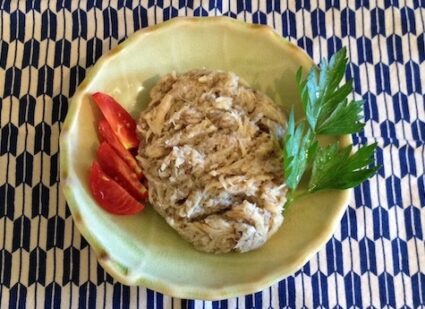Mushrooms Are Having a Moment
Leslie Krongold
Mushrooms are in the spotlight in the worlds of nutrition, DIY, and even art. Learn more in this first article of a five-part series.
Editor's note: This is the first of five articles on the magic of mushrooms. The author, Leslie Krongold, writes a blog and produces a podcast called Glass Half Full for caregivers and persons with chronic health issues.
I grew up with canned mushrooms. Those little white, slimy, tasteless mushrooms. I tolerated them because I was taught to eat everything my mother served me. I did not like them on pizza. I did not like the raw slivers available at the trendy all-you-can-eat salad bars.
It was not until I left provincial Florida for the salad bowl of America—California—that I was introduced to shiitake mushrooms. The gateway exotic mushroom.
With a newfound interest in this phylum-defying plant/animal, I jumped at the opportunity to attend a Fungus Fair. Held at a science museum and sponsored by the Mycological Society of San Francisco, this became a mainstay for my autumn activity calendar.
And then I discovered SOMA (Sonoma County Mycological Association) Camp—a three-day retreat in a secluded forest. This annual event draws some serious folks—people with PhDs in mycology, artists, renowned chefs, and just folks enchanted with mushroom magic. Like me.
Mushrooms are the fruiting bodies of an underground webbed network called mycelium. Unique mushrooms are still being discovered, though we now recognize approximately 700 species that are edible and nutritious.

If you’re a DIYer, you can grind your own dried mushrooms and put them in a spice jar. Or, sauté a medley of organic mushrooms, then pulverize them with an immersion blender. This is a weekly staple in my diet. Mix with scrambled eggs, savory oatmeal, pasta, or enjoy on an open-faced sandwich. I get the umami flavor and the nutritional boost and avoid the chewy texture.
Edible is an amorphous term. If a mushroom is considered inedible, it does not mean it’s poisonous. It generally means the mushroom is either too hard and/or not tasty. Jill Nussinow, a Registered Dietician and SOMA Camp instructor, recommends using nutritious, yet taste-challenged, mushrooms like turkey tails in soup or stock. A few of the most nutritious and tasty mushrooms available in grocery markets include shiitake, maitake, lion’s mane, and several oyster varieties.
Both edible and inedible mushrooms contain chitin—also found in the exoskeletons of crustaceans and insects—which is indigestible fiber. Beta glucans, found within chitin, have strong immune-stimulating properties. Cooking mushrooms is strongly advised to help break down the fungal cell walls in order to release nutrients and decrease potential gastrointestinal distress or allergic reactions. Brining, pickling, and dehydrating mushrooms can also achieve this.
Most mushrooms are high in vitamins B, C, and D as well as riboflavin, thiamin, and nicotinic acid. Packing a protein content nearly equivalent to corn, milk, and legumes, mushrooms are also a good source of iron, potassium, phosphorous, and folic acid. Even those ubiquitous white button mushrooms have nutrients with immune-enhancing properties.
If you’re not fond of eating mushrooms because of the taste, texture, or smell—like Jill’s husband who finds the aroma from mushroom cooking repugnant—there are other ways to benefit from these fabulous fungi.
Individual powdered mushroom packets are now abundant. Jill has tried many and recommends the brands Host Defense, OM, Fresh Cap, Mushroom Science, and Mushroom Wisdom. They can be added to beverages or sprinkled into food. When selecting one of these products, she considers where the mushrooms are grown and whether they have organic certification.
While you’re Googling mushroom recipes, consider this—many mushrooms are now called nutraceuticals. They are not only nutritious, but they offer medicinal benefits. After all, food = medicine.
Try these mushroom recipes from S&H:


